science
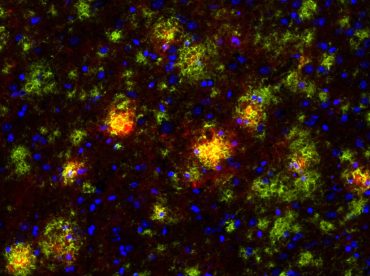
June 26, 2015
The view from the trenches: a conversation about Alzheimer’s disease
This immunofluorescence picture shows the brain of an Alzheimer’s disease mouse model, also known as the TgCRND8 mouse. In the picture, the amyloid beta plaques are stained green and the microglia, or immune cells of the brain, are stained red. Image courtesy of Luke Woods. By Caleb O’Brien | MU Bond Life Sciences Center Jean Camden and Luke Woods have an ant’s-eye view of Alzheimer’s disease. Both are bench scientists in the laboratory of Gary Weisman, a professor of biochemistry at the Bond Life Sciences Center. Jean has spent the past 12 of her 35…
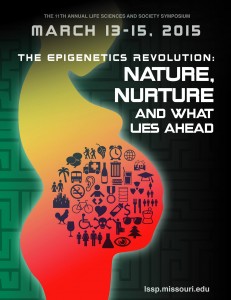
March 12, 2015
Five things you wanted to know about epigenetics (But were afraid to ask)
What the heck is it, anyway? Epigenetics involves changes in how your genes work. In classical genetics, traits pass from generation to generation in DNA, the strands of genetic material that encode your genes. Scientists thought alterations to the DNA itself was the only way changes could pass on to subsequent generations. So say you lost a thumb to a angry snapping turtle: Because your DNA hasn’t changed, your children won’t be born with smaller thumbs. Classic. Things get way more complicated with epigenetics. It turns out that some inherited changes pass on even though they…
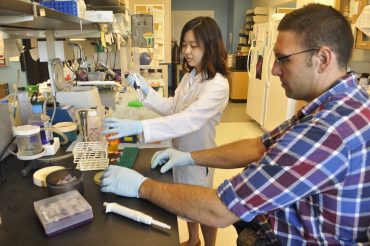
Aug. 4, 2014
Viruses as Vehicles: Finding what drives
Graduate students Yuleam Song and Dan Salamango inoculate a bacteria culture in Johnson’s lab. The inoculation takes a small portion of a virus and multiplies the sample, allowing researchers to custom-make viruses. By Madison Knapp | Bond Life Sciences Center summer intern Modern science has found a way to turn viruses —tiny, dangerous weapons responsible for runny noses, crippling stomach pains and worldwide epidemics such as AIDS— into a tool. Gene therapy centers on the idea that scientists can hijack viruses and use them as vehicles to deliver DNA to organs in the body that…

July 16, 2014
Researchers flex new muscle in SMA drug development
By Paige Blankenbuehler Lauren and Claire Gibbs share contagious laughter, ambition and a charismatic sarcasm. Both are honor students at Shawnee Mission East High School in a Kansas City suburb. They also share a neuromuscular disease called spinal muscular atrophy (SMA), designated as an “orphan disease” because it affects fewer than 200,000 people in the U.S. However, the landscape for individuals with SMA is quickly changing with the development of new drugs. More than 7 million people in the United States are carriers (approximately 1 in 40) of the so-called “rare” neurodegenerative disease, SMA. Lauren,17 (left) and Claire, 16 (right),…
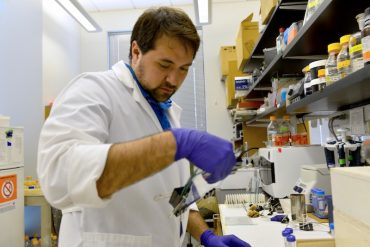
June 20, 2014
Nerve cell communication mechanisms uncovered, may lead to new therapeutic approaches for neurodegenerative diseases
Story by Madison Knapp/ Bond Life Sciences summer intern Simple actions like walking, swallowing and breathing are the result of a complex communication system between cells. When we touch something hot, our nerve cells tell us to take our hand off the object. This happens in a matter of milliseconds. This hyperspeed of communication is instrumental in maintaining proper muscle function. Many degenerative diseases affecting millions of people worldwide result from reduced signaling speed or other cellular miscommunications within this intricate network. Michael Garcia, investigator at the Christopher S. Bond Life Sciences Center and associate professor of biology at…

June 10, 2014
SoyKB: Leading the convergence of wet and dry science in the era of Big Data
Yaya Cui, an investigator in plant sciences at the Bond Life Sciences Center examines data on fast neuron soybean mutants that are represented on the SoyKB database. The most puzzling scientific mysteries may be solved at the same machine you’re likely reading this sentence. In the era of “Big Data” many significant scientific discoveries — the development of new drugs to fight diseases, strategies of agricultural breeding to solve world-hunger problems and figuring out why the world exists — are being made without ever stepping foot in a lab. Developed by researchers at the Bond Life…
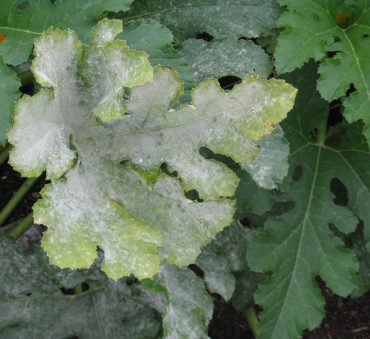
April 25, 2014
Frogs help researchers find genetic mechanism for mildew susceptibility in grapevine
Powdery mildew on a cabernet sauvignon grapevine leaf. | USDA Grape genetics publications and research A princess kisses a frog and it turns into a prince, but when a scientist uses a frog to find out more information about a grapevine disease, it turns into the perfect tool narrowing in on the cause of crop loss of Vitis vinifera, the world’s favorite connoisseur wine-producing varietal. MU researchers recently published a study that uncovered a specific gene in the Vitis vinifera varietal Cabernet Sauvingon, that contributes to its susceptibility to a widespread plant disease, powdery mildew.
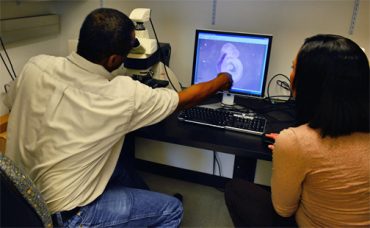
March 21, 2014
MU researchers find key gene in spinal locomotion, yield insight on paralysis
Samuel Waters and graduate researcher Desiré Buckley review stages of embryonic development. — BLANKENBUEHLER The difference between walking and being paralyzed could be as simple as turning a light switch on and off, a culmination of years of research shows. Recently, University of Missouri Assistant Professor of biology Samuel T. Waters isolated a coding gene that he found has profound effects on locomotion and central nervous system development. Waters’ work with gene expression in embryonic mouse tissue could shed light on paralysis and stroke and other disorders of the central nervous system, like Alzheimer’s disease. Waters…

Feb. 7, 2014
Quicker anthrax detection could save millions of dollars, speed bioterror response
Anthrax bacteria is a rod-shaped culture. Most common forms of transmission are through abrasions in the skin and inhalation. Imagine researchers in hazmat suits moving slowly and deliberately through a lab. One of them holds up a beaker. It’s glowing. This light — or the absence of it — could save millions of dollars for governments and save the lives of anthrax victims. Scientists at the University of Missouri Laboratory of Infectious Disease Research proved a new method for anthrax detection can identify anthrax quicker than any existing approach. When the “bioluminescent reporter phage” —…